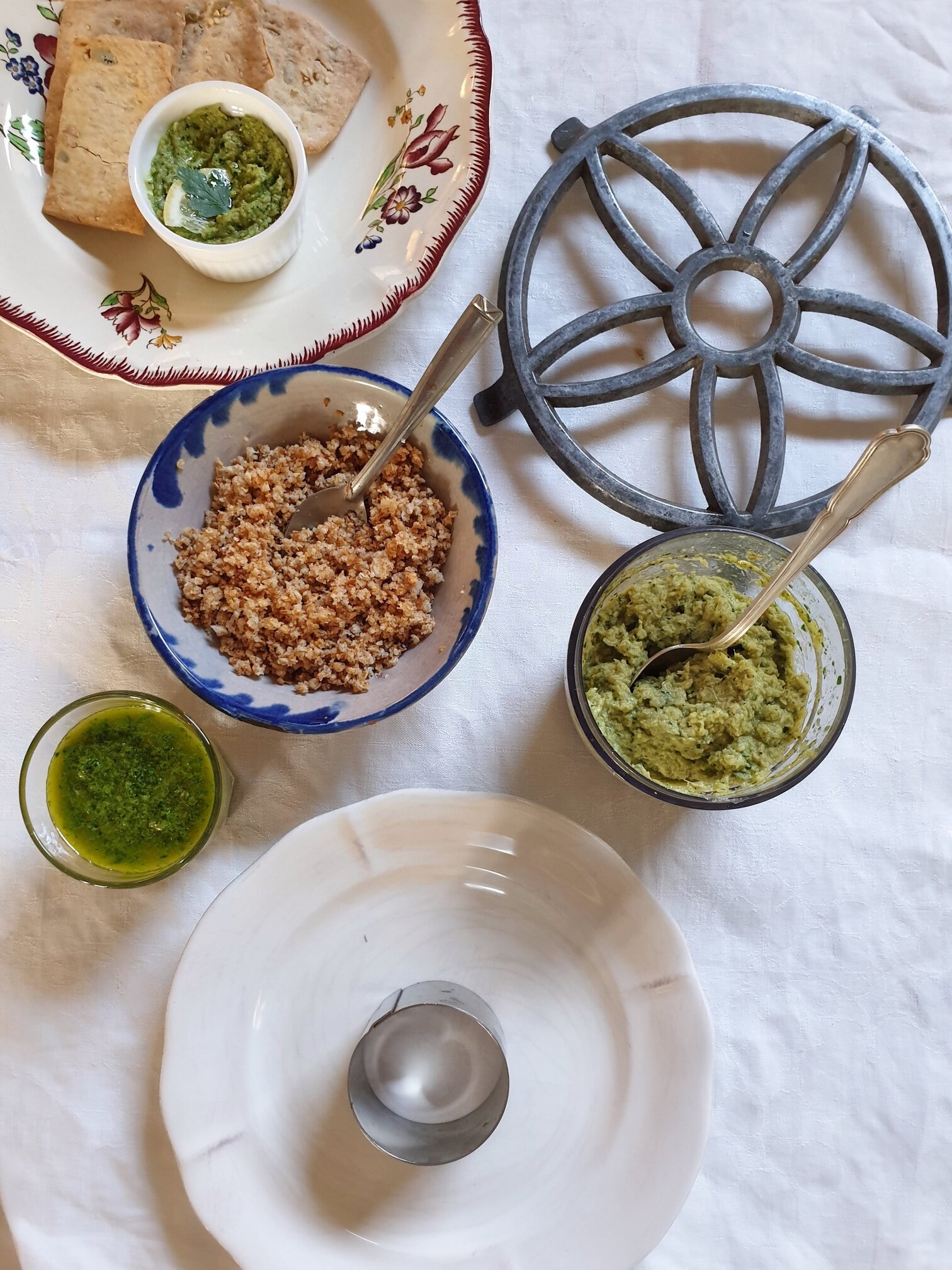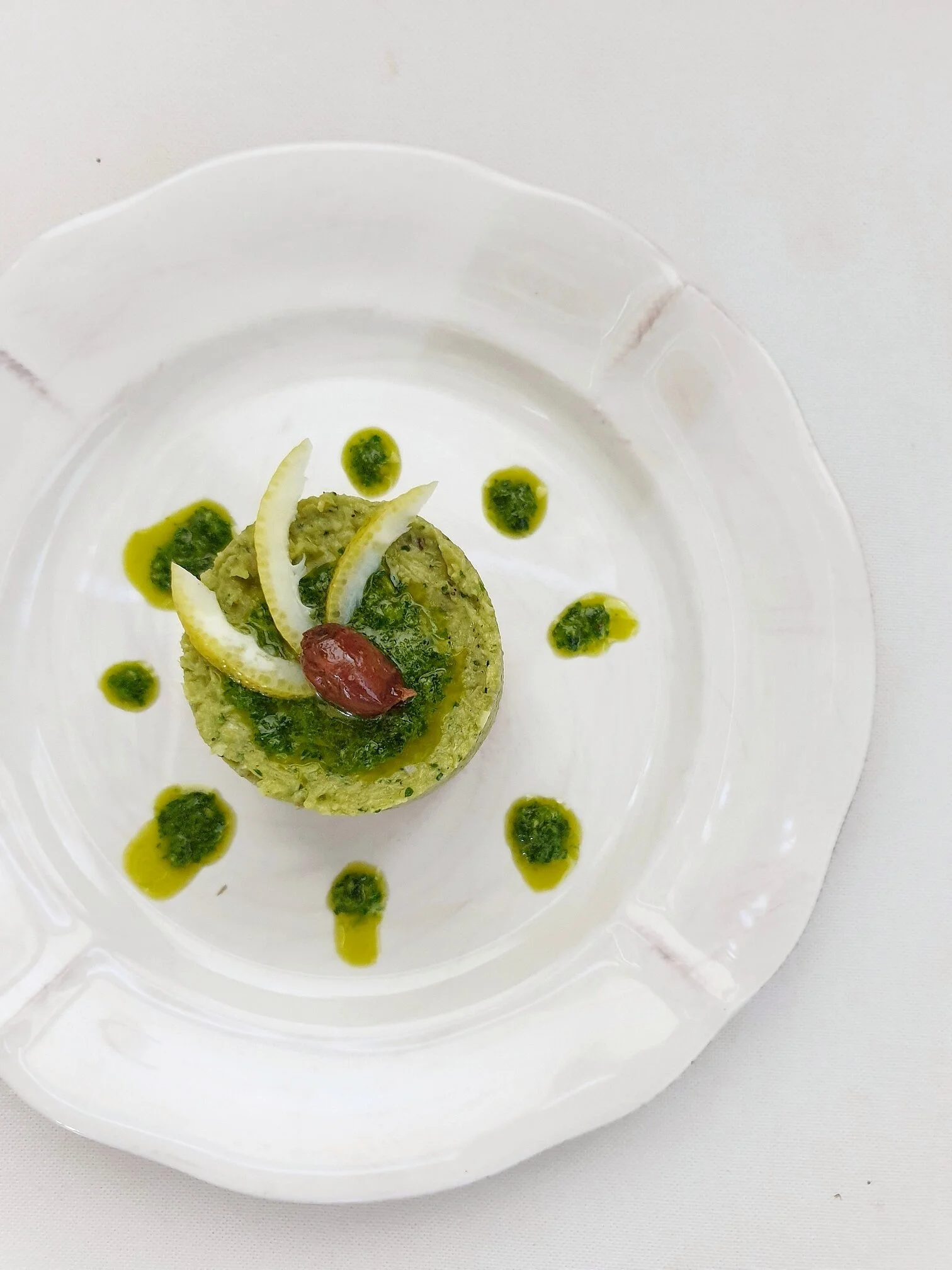How many times do we throw away vegetable “waste” because we don't know what to do with it?
Take artichokes, for instance.
There’s not much use for their woody leaves except for steaming and eating them with some vinaigrette. The stems, however, can be turned into something delicious quite effortlessly. A soup comes to mind… not sexy but healthy. Even better, here’s a simple but flavourful recipe for a surprising appetizer that looks so pretty everyone will think you put a lot of work into it, except you didn’t!
If you feel lazy, or you’re in a rush, you can serve this preparation as a spread on toasted slices of bread or crackers. Have fun!
Low Food Waste Tips for Artichokes
When you buy artichokes you should consider making more than one recipe with them:
One with the inner part (the heart)
one with the stems (see recipe below)
One with the outer leaves (steamed and enjoyed with a vinaigrette).
Reducing food waste is a mindset that requires a bit of planning and organising at first, then it becomes a habit, just trust the process.
Ingredients for 4 servings
12 artichoke stems ( or 6 big artichokes )
2 juicy organic lemons
1 bunch of parsley
1 bunch of basil
1 tablespoon of freshly grated ginger
3 cloves of garlic
3 bay leaves
3 cloves
6 juniper berries
250 ml of extra-virgin olive oil
2 tablespoons of white wine or cider vinegar
2 tablespoons of coarse salt
A pinch of freshly ground pepper
4 Taggiasche olives for decoration (or Kalamata olives)
4 slices of whole-grain bread
Note: To make this recipe you will need a pastry ring of 2,3 inches (6 cm) in diameter and a blender/food processor.
Directions
Preheat the oven to 170°/340F
Toast the bread for about 10 minutes, until it’s crunchy.
Peel the artichoke stems to get rid of the hard outer fibres and put them in a bowl with water and the juice of half a lemon. Keep the other half for decoration.
Bring 2 1/2 litres of water to the boil in a stockpot then add 2 teaspoons of salt, the unpeeled garlic cloves, bay leaves, juniper berries, cloves, vinegar, and the cleaned stems. Cook for about 10- 15 minutes until they are soft. Check with the point of a knife; you should find no resistance. Once cooked, drain in a colander, discard the bay leaves but keep the spices and garlic. Now peel the garlic.
In the meantime, make the pesto. Grate the zest of a lemon and then squeeze it. Wash the parsley and basil, but don’t dry them. Keep some leaves for decoration and discard the stalks. Put the leaves in a blender, pour the olive oil, keep two tablespoons for the crumble. Add the lemon zest and half of the lemon juice. Mix by pulse until it’s smooth. Using the pulse will avoid overheating the pesto, which results in the loss of flavour. Don’t wash the blender. Pour the pesto into a jar.
Roughly chop the cooked artichoke stems and put them in the blender. Mix them with two tablespoons of pesto, the remaining lemon juice, ginger, pepper, and the cooked garlic and spices. If it looks too dry, add some pesto. Taste the salt and adjust all the seasoning and flavours based on your preference. If you like it tarter, add lemon juice, and if you like it more spiced add pepper and ginger.
Now prepare the crumble for the base. Crash the bread roughly, put it in a clean blender with one tablespoon of extra-virgin olive oil, mix. If it’s too dry add another tablespoon of oil. Check out the photos below as a visual reference of the various steps.
Preparation and presentation
Prepare four dessert plates on the countertop, put the pastry ring on one, pour a quarter of the crumble in it, press with your fingertips or with the bottom of a small glass. Add one-quarter of the artichoke paste, pressing it to make it even. When done. Now, pull up the ring gently, clean it with a paper towel and repeat.
Decorate with thin slices of lemon, a bit of pesto and an olive, be creative! My photo is just a suggestion, don’t overdo it though, little touches are enough.
Tips and Notes
1) You can prepare everything the day before and store it in the fridge. You’ll only have to decorate it before serving.
2) Ask the grocer if they have some artichoke stems that they would otherwise chuck. They'll be happy to give them to you at no cost. When I go to the market, they know me and sometimes I come home loaded with free vegetables that most people don’t want, like the green parts of carrots, radishes, turnips, and beetroots.
3) Watch this video if you don't know how to clean artichokes.
4) To Whenreduce food waste when you buy artichokes you should consider making more than one recipe with them:
One with the inner part (the heart)
One with the stems (see recipe below)
One with the outer leaves (steamed and enjoyed with a vinaigrette)







